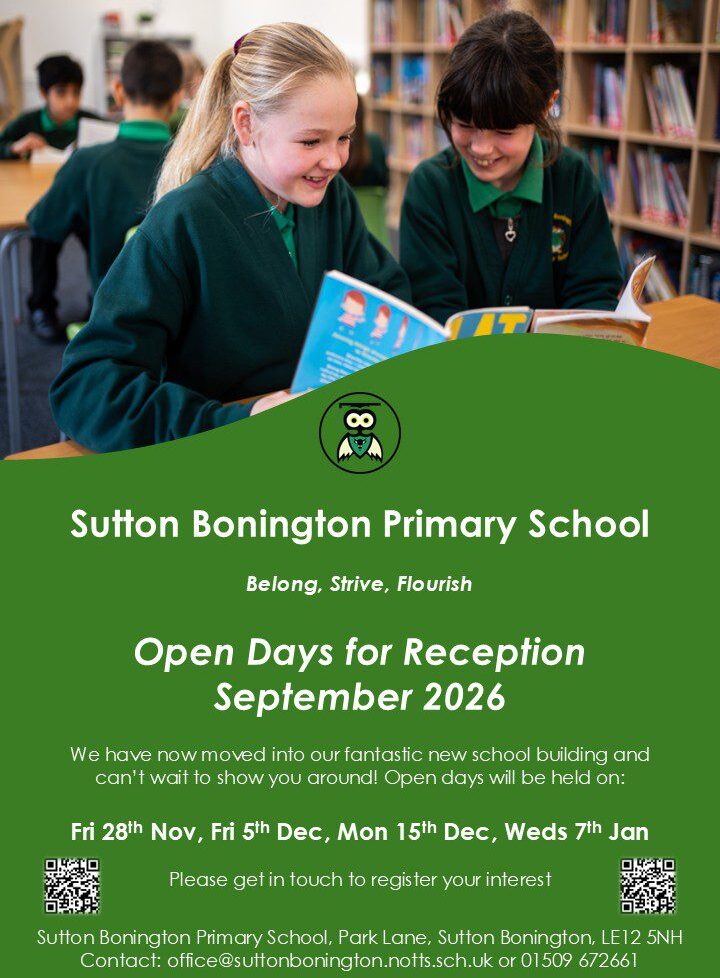Curriculum Intent
At Sutton Bonington Primary School, we teach children that History is the study of the past and how things have changed over time. We want to inspire in our learners a passion for history and a curiosity to learn as well as understand how and why people interpret the past in different ways.
Our intention for History is for children to have:
- A rich knowledge of historical events and historical figures, some of whom shaped the world we live in.
- A depth of knowledge that will enable them to use historical concepts in increasingly sophisticated ways.
- A knowledge and understanding of how people’s lives have changed, how diverse societies were, and the challenges that have been encountered.
- An ability to make links between the history of their local community, of Britain, and of the rest of the world.
- An ability to use historical and abstract terms to present, communicate and organise ideas about the past.
- A secure chronological framework on which they can continue to build upon.
- An ability to think like a historian and be able to reflect, discuss, debate and evaluate the past, asking perceptive questions and formulating lines of enquiry.
- The ability to think critically using sources of evidence and artefacts to support their opinion.
- Our curriculum intent is in line with that of the National Curriculum for History.
Curriculum Implementation
Children take part in three History units per year. These are taught within a half term in line with our coverage document.
The units of work are well sequenced to provide a coherent subject scheme that develops children’s historical knowledge, skills and subject disciplines. Key aspects and concepts, such as chronology, cause and effect, similarity and difference, significance and hierarchy, are revisited throughout the units and developed over time. They also develop historical skills based on evidence and historical enquiry. The specific content of each unit is drawn from our knowledge and skills progression document to ensure appropriate pitch for the different year groups. Each unit also sets out key vocabulary that children are expected to be able to use in a knowledge organiser, along with each lesson’s key knowledge. Units contain approximately 6 lessons.
Children’s written work and photographs are recorded in their topic book. Each piece of work is dated and includes a learning objective in the form ‘to know…’ or ‘to know how…’
Within the Early Years Curriculum, children in Reception experience the History curriculum through the ‘Past and Present’ early learning goal.
Adaptations for children with special educational needs and disabilities are made in line with our SEND Curriculum Adaptations document. These may include the use of additional scaffolding, explicit instruction, cognitive and metacognitive strategies, flexible groupings and use of specific resources or technology.
Where possible, opportunities for curriculum enrichment within History are exploited. For example, children may receive visits involving specialist workshops or visit historical places, such as castles or museums.
Opportunities for children’s spiritual, moral, social and cultural development through History are also explored where appropriate. For example, History will be used to promote a sense of curiosity around how and why events happened in the past while children may also be required consider and comment on moral dilemmas around key historical issues (e.g. slavery and hierarchy). Socially, children will be able to compare and contrast past and present societies and understand how the modern world has developed for the better. Children will also be given the opportunity to develop an understanding of what life was like for people in different cultures in the past compared to life in Britain both then and now.
Impact
Through the explicit teaching of the history curriculum, teachers and pupils assess their learning throughout the lesson (AFL). Within the units, pupils take part in low stakes quizzes to help practice knowledge retrieval and at the end of a unit in Key Stage 2, learners complete short summative tasks, which provide opportunities for more focused assessment of knowledge acquisition. This then helps our learners to build a schema of connections of concepts and knowledge which they can retrieve throughout their continued learning journey in history. We hope pupils will be encouraged to undertake research independently to further their own enjoyment across a range of history topics.
We assess the impact of our curriculum through examining children’s work, talking with and questioning children as well as making observations and setting specific tasks. Teacher assessment is ongoing throughout the year with a formal summative assessment made and recorded at the end of the summer term.


